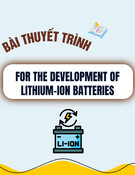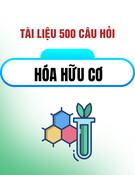
N.Huy Hung, N.Thi Trinh,… / Tạp chí Khoa học và Công nghệ Đại học Duy Tân 3(70) (2025) 69-75
69
D U Y T A N U N I V E R S I T Y
Quantitative analysis of some chemical components in leaves
and flowers of Camellia luongii Tran & Le in Vietnam
Phân tích định lượng thành phần hóa học trong lá và hoa của loài Camellia luongii
Tran & Le ở Việt Nam
Nguyen Huy Hunga*, Nguyen Thi Trinhb, Nguyen Trong Nghiab, Nguyen Ngoc Quyc
Nguyễn Huy Hùnga*, Nguyễn Thị Trinhb, Nguyễn Trọng Nghĩab, Nguyễn Ngọc Quýc
aInstitute of Research and Development, Duy Tan University, Da Nang, 550000, Viet Nam
aViện Nghiên cứu và Phát triển Công nghệ cao, Ðại học Duy Tân, Ðà Nẵng, Việt Nam
bForest Industry Research Institute (FIRI), Duc Thang Ward, North Tu Liem District, Hanoi City, 143315, Viet Nam
bViện Nghiên cứu Công nghiệp Lâm nghiệp (FIRI), Phường Đức Thắng, Quận Bắc Từ Liêm, Thành phố Hà Nội,
143315, Việt Nam
cInstitute of Regional Research and Development (Irrd), No 70, Tran Hung Dao Street, Hoan Kiem District, Hanoi City,
Viet Nam
cViện Nghiên cứu và Phát triển Khu vực (Irrd), Số 70, Đường Trần Hưng Đạo, Quận Hoàn Kiếm, Thành phố Hà Nội,
Việt Nam
(Date of receiving article: 12/05/2025, date of completion of review: 29/05/2025, date of acceptance for posting:
17/06/2025)
Abstract
This study presents a comparative quantitative analysis of major bioactive compounds caffeine, polyphenols,
saponins, and flavonoids in the leaves and flowers of Camellia luongii, a relatively unexplored Camellia species. The
results indicate that the leaves of C. luongii contain significantly higher concentrations of caffeine (129.0 mg/100 g), total
polyphenols (5260 mg/100 g), and total flavonoids (453.0 mg/100 g) compared to its flowers. When benchmarked against
other Camellia species, such as C. sinensis, C. japonica, and C. oleifera, C. luongii demonstrates moderate caffeine
content but remarkably high polyphenol levels relative to several species. These findings suggest the potential of C.
luongii as a new source of natural antioxidants and bioactive compounds for functional food or nutraceutical applications.
Keywords: Caffeine; flavonoids; natural antioxidants; polyphenols; saponins.
Tóm tắt
Nghiên cứu này trình bày phân tích định lượng các hợp chất hoạt tính sinh học chính caffeine, polyphenol, saponin và
flavonoid rong lá và hoa của Camellia luongii, một loài Camellia chưa được nghiên cứu trước đây. Kết quả chỉ ra rằng lá
của C. luongii chứa nồng độ caffeine (129,0 mg/100 g), tổng polyphenol (5260 mg/100 g) và tổng flavonoid (453,0
mg/100 g) cao hơn đáng kể so với hoa của nó. Khi so sánh với các loài Camellia khác, chẳng hạn như C. sinensis, C.
japonica và C. oleifera, C. luongii cho thấy hàm lượng caffeine vừa phải nhưng mức polyphenol cao đáng kể so với một
số loài. Những phát hiện này cho thấy tiềm năng của C. luongii như một nguồn chất chống oxy hóa tự nhiên và hợp chất
hoạt tính sinh học mới cho các ứng dụng thực phẩm chức năng hoặc dược phẩm chức năng.
Từ khóa: Caffeine; Polyphenol; Saponin; Flavonoid; Chất chống oxy hóa tự nhiên.
*Corresponding author: Nguyen Huy Hung
Email: nguyenhuyhung@duytan.edu.vn
3(70) (2025) 69-75
DTU Journal of Science and Technology

N.Huy Hung, N.Thi Trinh,… / Tạp chí Khoa học và Công nghệ Đại học Duy Tân 3(70) (2025) 69-75
70
1. Introduction
The Camellia genus, first described by
Linnaeus in 1753, includes approximately 120 to
280 species, predominantly distributed
throughout East and Southeast Asia. Vietnam
and China are recognized as biodiversity
hotspots for this genus, accounting for the
highest number of species reported.
Phytochemical and pharmacological
investigations have largely centered on three key
species with substantial commercial relevance
Camellia sinensis (L.) Kuntze, Camellia
japonica L., and Camellia oleifera Abel due to
their extensive applications in tea production
and edible oil extraction [19]. Among these,
Camellia sinensis has been particularly well-
characterized and contains a broad spectrum of
secondary metabolites, such as alkaloids,
terpenoids, steroids, saponins, and polyphenolic
compounds. Numerous studies have confirmed
that members of the genus Camellia possess a
wide range of bioactivities, notably antioxidant,
antimicrobial, antifungal, antiviral, and
anticancer properties, suggesting their potential
utility in pharmaceutical and nutraceutical
contexts [16].
Camellia luongii Tran & Le is a recently
identified yellow-flowered species endemic to
Thai Nguyen Province, Vietnam, with its initial
collection recorded in 2015. Historical accounts
from residents suggest that the species once
thrived in dense populations across mountainous
regions, although it was largely overlooked at
the time. Since 2011, however, there has been
increasing exploitation of this plant, including
the harvesting of flower buds (both immature
and mature), dried flowers, fruits, and seeds for
commercial purposes. Additionally, branches
have been extensively collected for propagation
in horticultural settings. As a result, the
remaining wild populations predominantly
consist of individuals regenerated from original
rootstocks. The current condition of these wild
trees is concerning, as they are often found
beneath large canopy trees that were
subsequently cut down during land clearing for
industrial agricultural development.
To assess the potential applications of
Camellia luongii in comparison with other tea
species, this study conducted a quantitative
analysis of key tea constituents, including
caffeine, total polyphenols, total saponins, and
total flavonoids, in both the leaves and flowers
of the species. Notably, this represents the first
reported quantification of these bioactive
compounds in Camellia luongii, providing a
foundational dataset for future research and
potential utilization.
2. Materials and methods
2.1. Plant materials
In 2022, samples of Camellia luongii,
including mature leaves (CLL), young leaf buds
(CLB), and fruit pericarps (CLH), were
collected from Na Chi Phang village, Lung Than
commune, Si Ma Cai district, Lao Cai province,
northern Vietnam. A voucher specimen was
deposited at the Forest Industry Research
Institute under the Vietnam Academy of Forest
Sciences for documentation. The plant materials
were rinsed thoroughly with tap water to remove
debris and subsequently oven-dried at 60°C for
48 hours.
2.2. Extraction
The dried plant materials were subjected to
triple extraction using 95% ethanol under
ultrasonic-assisted conditions. The resulting
ethanol solutions were concentrated under
reduced pressure at 50°C using an IKA RV10
rotary evaporator (Germany) until complete
solvent removal was achieved. The dried crude
extracts were then preserved at 4°C for
subsequent phytochemical and biological
analyses.

N.Huy Hung, N.Thi Trinh,… / Tạp chí Khoa học và Công nghệ Đại học Duy Tân 3(70) (2025) 69-75
71
2.3. Caffeine quantification
The sample was weighed into a 50 mL
centrifuge tube, and approximately 40 mL of hot
water was added. It was vortexed and sonicated
in an ultrasonic bath at 80°C for 60 minutes.
Subsequently, it was centrifuged at 6000 rpm for
5 minutes, and the supernatant was transferred to
a 100 mL volumetric flask. The process was
repeated with 40 mL of hot water, sonicated for
30 minutes. The combined supernatants were
collected in a 100 mL volumetric flask and made
up to the mark with water. The solution was
filtered through filter paper and injected into the
HPLC system [9].
HPLC Conditions
• C18 column (Waters) (250 mm × 4.6 mm ×
5 µm) with a corresponding guard column
• PDA detector at 272 nm
• Mobile phase: H₂O: MeOH = 70 : 30
• Flow rate: 1 mL/min
• Injection volume: 20 µL
2.4. Quantification of total polyphenols
The sample was weighed into a 50 mL
centrifuge tube. Approximately 30 mL of 70%
methanol was added, vortexed, and hydrolyzed
in a water bath at 70°C for 1 hour. It was then
centrifuged at 6000 rpm for 5 minutes. The
supernatant was decanted into a 50 mL
volumetric flask. The process was repeated with
10–20 mL of 70% methanol. The combined
supernatants were collected in a 50 mL
volumetric flask and made up to the mark with
70% methanol. The solution was filtered
through filter paper, reacted with the Folin-
Ciocalteu reagent, and measured using a UV-Vis
spectrophotometer at 737 nm [10].
2.5. Quantification of total saponins
Saponins in the sample were extracted using
methanol, purified, and impurities were
removed by shaking with n-butanol and water.
The extract was defatted with ether, then dried,
and the obtained mass was weighed to determine
the saponin content [11].
2.6. Quantification of total flavonoids
Total flavonoids in the sample were extracted
using ethanol. The extract was then reacted with
AlCl₃ to form a colored complex in an alkaline
medium and measured spectrophotometrically at
415 nm [11].
3. Results and discussion
The chemical composition analysis revealed
significant differences between the leaves and
flowers in terms of bioactive compound content
(Table 1). Specifically, the caffeine content in
the leaves (129.0 mg/100 g) was more than six
times higher than in the flowers (21.2 mg/100 g),
indicating a greater potential for physiological
stimulation in the leaves. The total polyphenol
content was similar between the two parts, with
5.26 g/100 g in leaves and 5.09 g/100 g in
flowers. Regarding total saponins, the leaves
contained 14.2 g/100 g compared to 13.1 g/100
g in the flowers, which may contribute to higher
anti-inflammatory and antimicrobial activity in
the leaves. Notably, the total flavonoid content
in the leaves (453.0 mg/100 g) was more than
four times that of the flowers (109.0 mg/100 g),
suggesting a markedly superior antioxidant
potential.
Table 1. Quantitative analysis of compounds characteristic of Camellia luongii species.
Analysis indicators
Unit
Leaves
Flowers
Caffeine
mg/100 g
129.0
21.2
Total polyphenols
mg/100 g
5260
5090
Total Saponins
mg/100 g
14.2
13.1
Total Flavonoids
mg/100 g
453.0
109.0

N.Huy Hung, N.Thi Trinh,… / Tạp chí Khoa học và Công nghệ Đại học Duy Tân 3(70) (2025) 69-75
72
The quantitative analysis of Camellia luongii
revealed significant differences in the
distribution of bioactive compounds between
leaves and flowers, as well as in comparison to
other Camellia species. Notably, the caffeine
content in the leaves of C. luongii (129.0 mg/100
g DW) (Table 1) was markedly lower than that
found in commonly consumed C. sinensis teas,
such as green tea (1830–2530 mg/100 g) and
black tea (1430–3480 mg/100 g) (Table 2),
suggesting its potential as a low-caffeine
alternative. Conversely, C. luongii flowers
contained even less caffeine (21.2 mg/100 g),
further underscoring its suitability for health-
conscious formulations.
Table 2. Summary of the total caffeine content of some Camellia species
Material
Content (mg/100g DW)
Solvent
Part
Mate tea (Camellia sinensis)
610 to 1320
Water
Leave [17]
White tea (Camellia sinensis)
2150 to 31000
Water
Leave [17]
Green tea (Camellia sinensis)
1830 to 2530
Water
Leave [17]
Black tea (Camellia sinensis)
1430 to 3480
Water
Leave [17]
China green tea (Camellia sinensis)
2722.4
Water
Leave [1]
China black tea (Camellia sinensis)
2709.5
Water
Leave [1]
Japan green tea (Camellia sinensis)
1883.1
Water
Leave [1]
Japan black tea (Camellia sinensis)
2165.0
Water
Leave [1]
Nepal green tea (Camellia sinensis)
1978.8
Water
Leave [1]
Nepal black tea (Camellia sinensis)
3671.5
Water
Leave [1]
Korea green tea (Camellia sinensis)
1977.5
Water
Leave [1]
Korea black tea (Camellia sinensis)
2485.2
Water
Leave [1]
In terms of total polyphenol content, C.
luongii leaves (5260 mg/100 g) and flowers
(5090 mg/100 g) exhibited levels considerably
higher than those found in C. japonica leaves
(74.62 mg/100 g) (Table 3) and comparable to
mid-range values reported for C. sinensis-
derived green and black teas. However, these
values remained lower than the exceptionally
high polyphenol concentrations found in the
flowers of species such as C. achrysantha
(17188 mg/100 g) and C. pubipetala (17000
mg/100 g), which may have specialized
applications in antioxidant-rich formulations.
Table 3. Summary of total polyphenol content of some Camellia species
Material
Content
(mg/100 g DW)
Solvent
Part
Camellia japonica
74.62
Methanol
Young leaves [6]
Camellia japonica
65.02
Methanol
flower buds [6]
Camellia japonica
62.42
Methanol
flowers [6]
Camellia oleifera
1.0333-2.3800
Petroleum ether
Fruit [8]
Black tea (Camellia sinensis)
1132
Water
Leave [13]
Green tea (Camellia sinensis)
1235.5
Water
Leave [13]
Black tea (Camellia sinensis)
1164
Ethanol
Leave [13]
Green tea (Camellia sinensis)
1346
Ethanol
Leave [13]
Camellia oleifera seed oil
0.34-5.88
n-Hexane
Seed [7]
Camellia tunghinensis
5988
Ethanol (75%)
Flower [15]
Camellia longzhouensis
14406
Ethanol (75%)
Flower [15]
Camellia pubipetala
17000
Ethanol (75%)
Flower [15]

N.Huy Hung, N.Thi Trinh,… / Tạp chí Khoa học và Công nghệ Đại học Duy Tân 3(70) (2025) 69-75
73
Camellia quinqueloculosa
14796
Ethanol (75%)
Flower [15]
Camellia achrysantha
17188
Ethanol (75%)
Flower [15]
Camellia impressinervis
14210
Ethanol (75%)
Flower [15]
Camellia insularis
16506
Ethanol (75%)
Flower [15]
Camellia perpetua
7608
Ethanol (75%)
Flower [15]
Camellia micrantha
6326
Ethanol (75%)
Flower [15]
Camellia nitidissima
7422
Ethanol (75%)
Flower [15]
Camellia oleifera
1.26
SC–CO2
Seed [12]
In terms of total polyphenol content, C.
luongii leaves (5260 mg/100 g) and flowers
(5090 mg/100 g) exhibited levels considerably
higher than those found in C. japonica leaves
(74.62 mg/100 g) (Table 4) and comparable to
mid-range values reported for C. sinensis-
derived green and black teas. However, these
values remained lower than the exceptionally
high polyphenol concentrations found in the
flowers of species such as C. achrysantha
(17188 mg/100 g) and C. pubipetala (17000
mg/100 g), which may have specialized
applications in antioxidant-rich formulations.
Table 4. Summary of total flavonoid content of some Camellia species
Material
Content
(mg/100 g DW)
Solvent
Part
Camellia oleifera
180 to 630
Petroleum ether
Fruit [8]
Black tea
633
Water
Leave [13]
Green tea
1698
Water
Leave [13]
Black tea
1950
Ethanol
Leave [13]
Green tea
3155
Ethanol
Leave [13]
Green tea
188
Water
Leave [4]
Camellia tunghinensis
320
Ethanol (75%)
Flower [15]
Camellia longzhouensis
506
Ethanol (75%)
Flower [15]
Camellia pubipetala
428
Ethanol (75%)
Flower [15]
Camellia quinqueloculosa
310
Ethanol (75%)
Flower [15]
Camellia achrysantha
536
Ethanol (75%)
Flower [15]
Camellia impressinervis
662
Ethanol (75%)
Flower [15]
Camellia insularis
826
Ethanol (75%)
Flower [15]
Camellia perpatua
842
Ethanol (75%)
Flower [15]
Camellia micrantha
346
Ethanol (75%)
Flower [15]
Camellia nitidissima
848
Ethanol (75%)
Flower [15]
White tea
50.26
Ethanol
Leave [5]
Green tea
21.69
Ethanol
Leave [5]
Camellia sinensis var assamica
191.40
Ethanol (75%)
Leave [14]
Camellia sinensis
3320
Water
Leave [3]
Total saponins were relatively low in both
leaves (14.2 mg/100 g) and flowers (13.1
mg/100 g) of C. luongii, particularly when
contrasted with C. sinensis seeds (187.91
mg/100 g) and C. oleifera seeds (74.12 mg/100
g) (Table 5). This suggests that C. luongii may
not be a major source of saponins compared to
other Camellia species, although its levels are
higher than some reported floral values, such as
those in C. nitidissima flowers (56.53 mg/100 g).


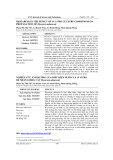



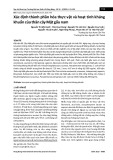
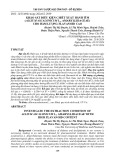


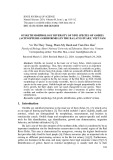
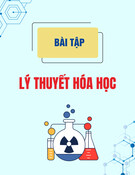
![Đề thi kết thúc học phần Nguyên lí Hóa học 2 [mới nhất]](https://cdn.tailieu.vn/images/document/thumbnail/2025/20251014/anhinhduyet000/135x160/69761760428591.jpg)


